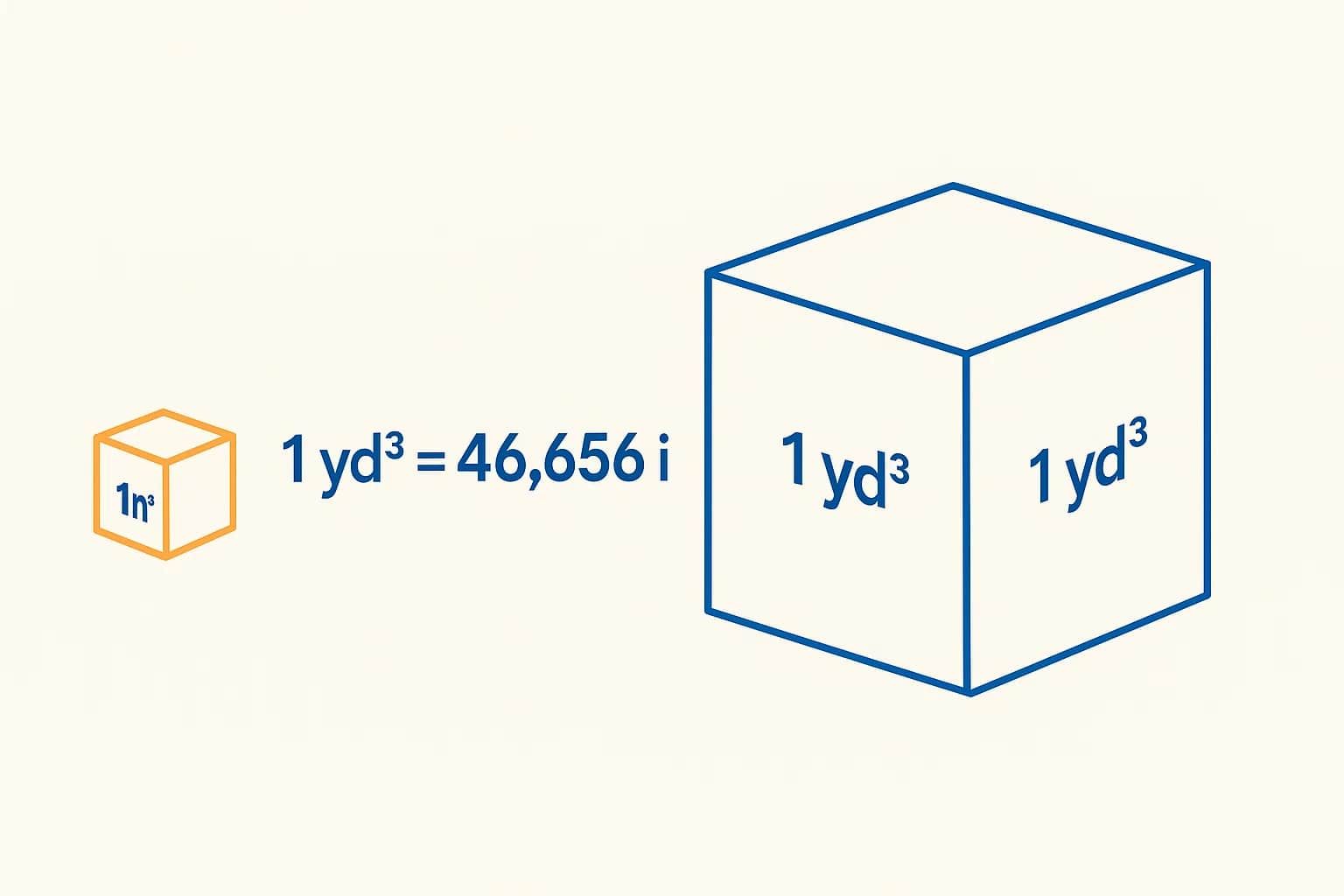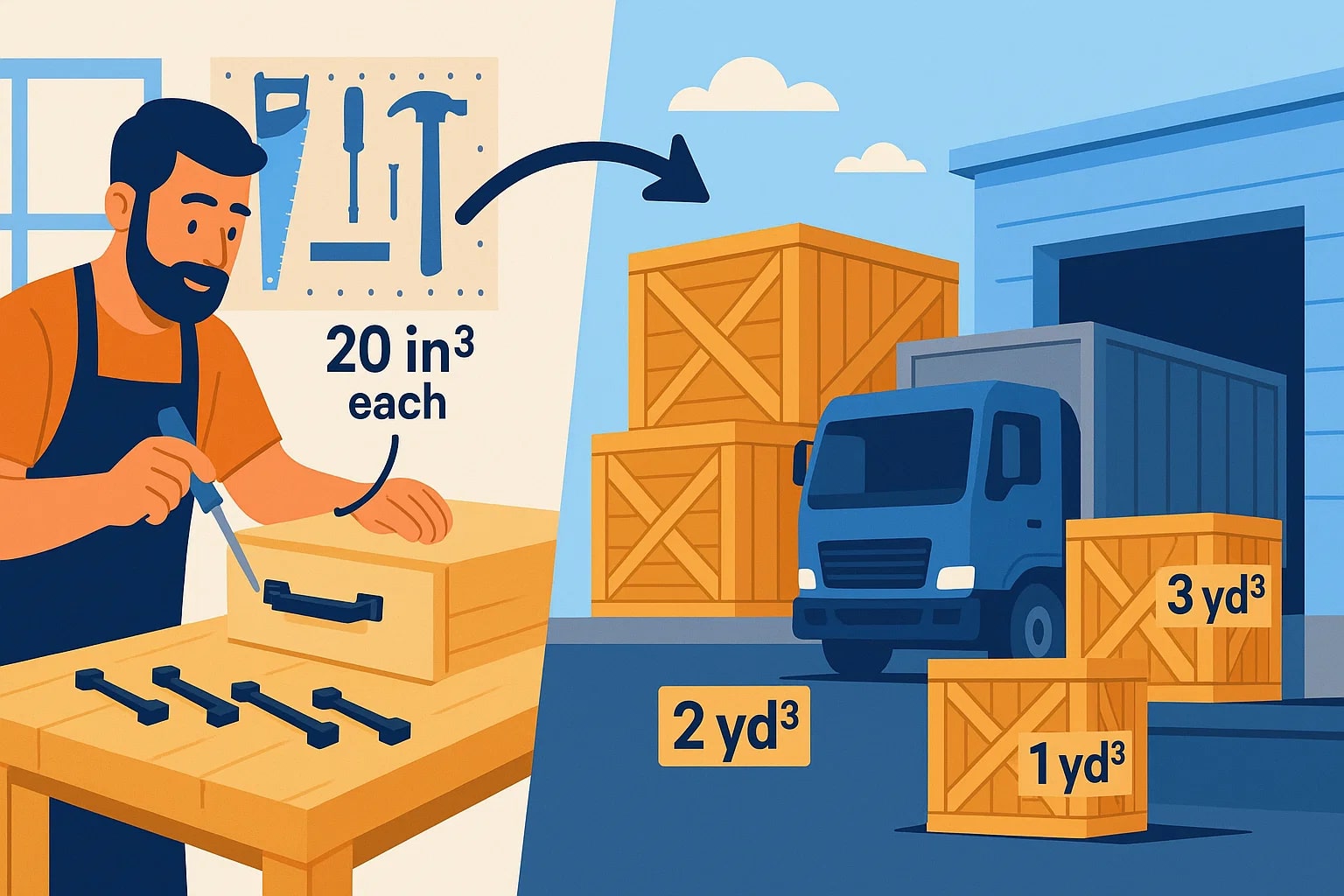cubic inch to cubic yard – How to convert in³ to yd³
The conversion from cubic inches to cubic yards spans a wide scale. Cubic inches are practical for precise product details, while cubic yards are used for large volumes in landscaping, construction, and freight. Moving between them keeps small design calculations consistent with large-scale planning.
What is a cubic inch (in³)?
A cubic inch is the volume of a cube with sides of 1 inch. It equals about 16.387 cm³. This unit is still used in US industries, especially for automotive engines, product packaging, and furniture parts.
What is a cubic yard (yd³)?
A cubic yard is the volume of a cube with sides of 1 yard (3 feet). It equals 27 ft³ or 46,656 in³. The unit is popular for measuring soil, gravel, concrete, and other bulk materials delivered by truckload.
Conversion formula – cubic inch to cubic yard
The difference in scale is large, but the relationship is exact.
The base equivalence is:1 yd³ = 46,656 in³
To convert cubic inches to cubic yards:1 cubic inch = cubic yard ÷ 46,656
To convert cubic yards to cubic inches:1 cubic yard = cubic inch × 46,656
Examples:
-
93,312 in³ = 2 yd³ -
5 yd³ = 233,280 in³

For quick and reliable calculations beyond in³ and yd³, Jetcalculator’s Volume Converter and wide set of Conversion Tools provide fast results across metric and imperial systems.
Do you know?
-
In landscaping: Garden soil and mulch are often delivered in cubic yards, but homeowners may calculate their plots in cubic inches first.
-
In shipping: Cargo items can be measured in cubic inches for packaging, then converted to cubic yards for container space planning.
-
In construction: Concrete truckloads are ordered in cubic yards, though engineers may break down smaller elements in cubic inches.
From tiny parts to truckloads
Imagine a furniture maker designing drawer handles measured at 20 in³ each. When dozens of finished units are packed together for shipment, the freight company calculates total load space in yd³. What began as a handful of cubic inches adds up to cubic yards on a cargo list.
This same shift happens in landscaping: a small backyard flower bed measured in inches must be converted into cubic yards before ordering soil. Without this step, suppliers wouldn’t know how much material to load onto trucks.

Scaling precision into bulk
The formula 1 yd³ = 46,656 in³ highlights how measurement connects detail to scale. A single cubic yard can hold thousands of cubic inches, making it practical for bulk delivery while staying linked to small design calculations.
From product parts to soil deliveries, converting between cubic inches and cubic yards ensures clarity in projects of every size. It’s the step that ties precision planning with the realities of large-scale supply.

